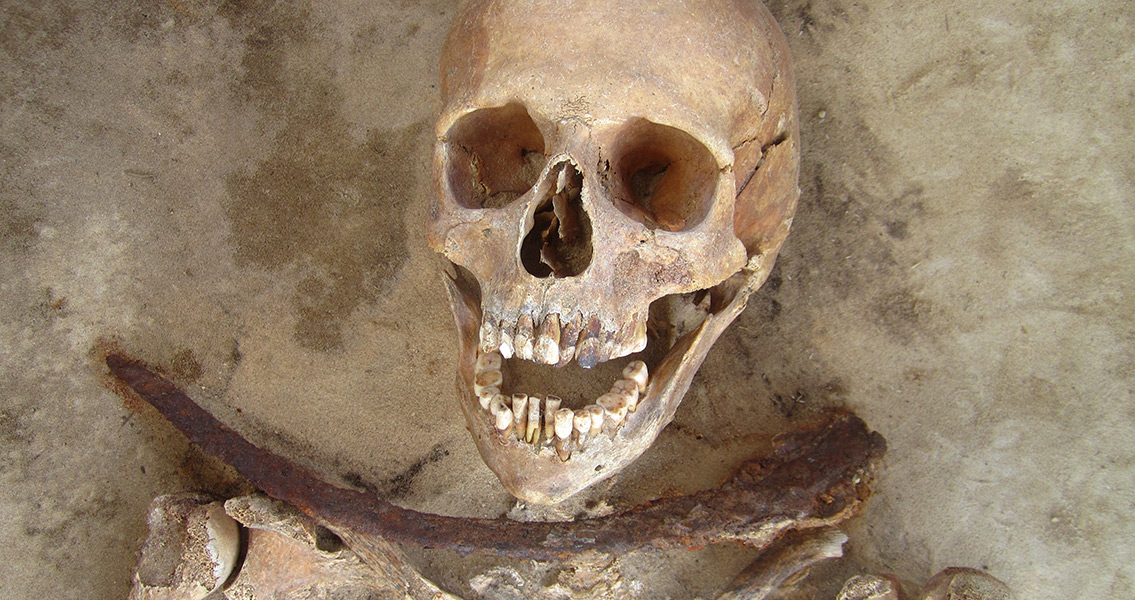<![CDATA[Magic and demons were very real things to the people burying their dead 400 years ago in Poland. Five graves have been discovered by archaeologists, containing sickles placed on the skeletons. The strange burial practice is now believed by experts to indicate people’s fear of demons and their belief in magic. The site is located in northeastern Poland, at the Drawsko cemetery which dates back to the seventeenth and eighteenth centuries. Archaeologists have been excavating at the site since 2008 and have uncovered more than 250 graves. In four of the graves the skeletons were found with the sickles laid across their throats, the fifth grave contained a skeleton with the sickle placed across its hips. Previously, the graves were described as vampire burials, and the sickles were believed to be a method of preventing the dead from reappearing to terrorize the living. In a new study, reported in Antiquity, that idea is rejected by the co-authors; Marek Polcyn, from Lakehead University in Canada, and Elzbieta Gajda, with the Muzeum Ziemi Czarnkowskiej. The archaeologists now prefer to use the all-encompassing term of 'anti-demonic' when discussing and describing these burials, in part because vampires were just one of the evil manifestations of the dead, according to traditional folklore from the region. Furthermore, the sickle graves had been afforded burial privileges not usually extended to the deceased believed to be vampires found in other locations. The dead buried with sickles were provided with Christian funerals in sacred ground, and buried next to other community members, their corpses appearing unmutilated. Scientists who studied the teeth of the corpses, specifically the chemical signatures found there, discovered that all five were local to the area. The study reports that the ritual and magical meaning of this particular gesture seems to be beyond doubt and that the sickle may have had a multitude of ritualistic meanings. The sickle could be intended to keep the deceased inside their graves under the threat of having their throats cut, or it could have been placed there to keep evil forces from torturing the deceased's soul. Additionally, the sickle was made of iron forged in fire, which could be used as a symbol of the pathway from life to death. At the time the cemetery was in use, the old traditions from the Polish pagan Slavic faith system – including the belief in demons - still existed, although Christianity was the predominant religion. Aside from the presence of the sickle, very little sets these graves apart from others so it’s still unclear to experts what is was that made these people demonic. It’s possible they had been attributed with supernatural powers while alive or they possessed what Polish folklore considered suspicious physical characteristics, for example a red complexion, an overly hairy body, or a large head. It’s also possible they suffered a traumatic death, which wouldn’t have allowed for the correct ritual and rites to be performed to make a smooth transition into death for the spirit – what some researchers refer to as 'a bad death'. All but one of the people found with sickles appeared to be older and could have easily died of natural causes, the fifth was a teenage girl. Experts have speculated she could have met a violent end, but there are no indications on the bones what the cause of death was. Image courtesy of Lesley A. Gregoricka]]>
Sickle Graves Prove Fear of Demons Was Real
